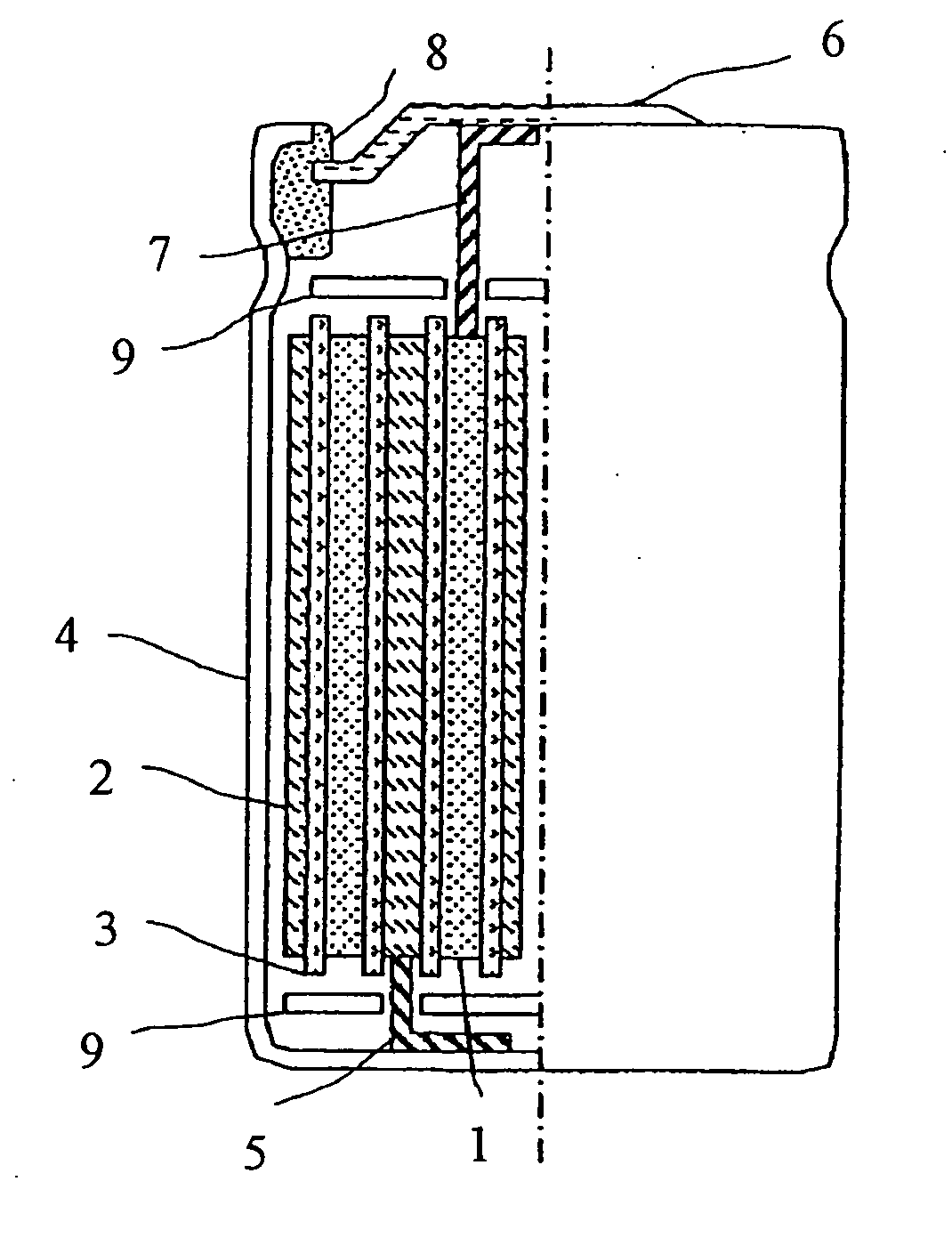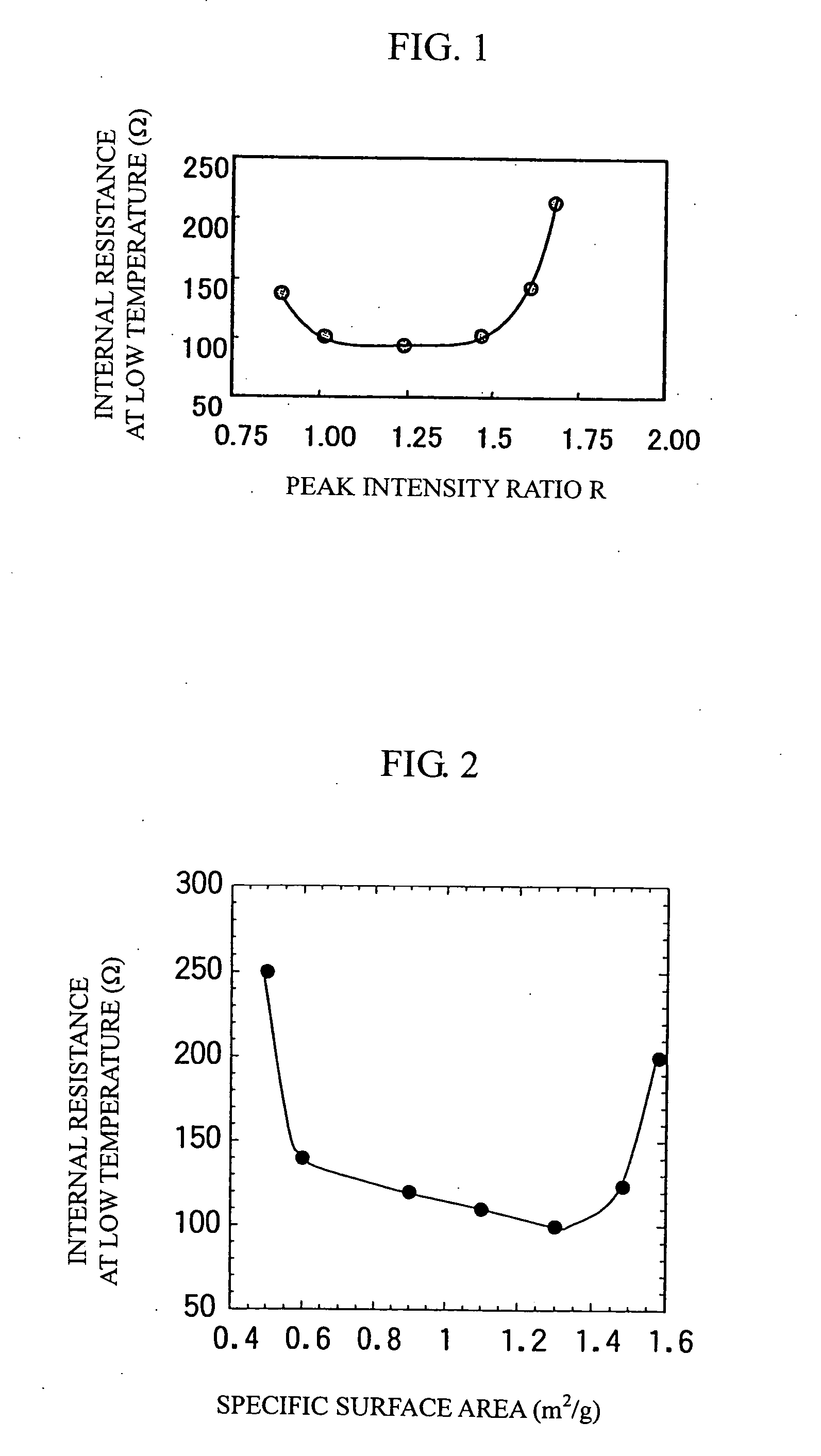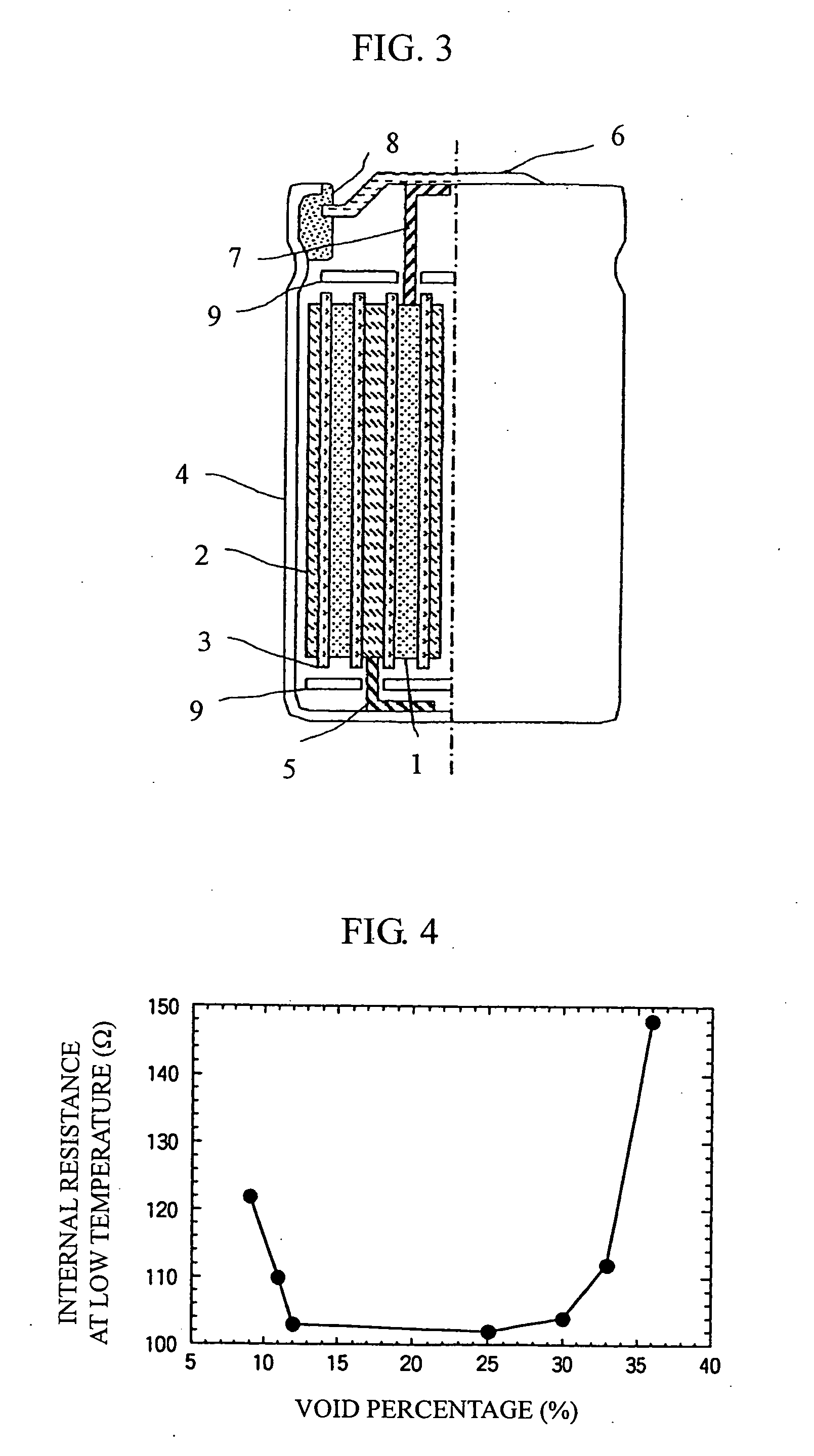Positive electrode material for lithium secondary battery and lithium secondary battery using the same
- Summary
- Abstract
- Description
- Claims
- Application Information
AI Technical Summary
Benefits of technology
Problems solved by technology
Method used
Image
Examples
embodiment
[0034] In the following, examples and comparative examples regarding the present invention are described. The present invention is not limited to the following examples.
example 1
[0035] (Preparing Positive Electrode Material)
[0036] In the example, manganese dioxide, cobalt oxide, nickel oxide, and lithium carbonate were used as raw materials. After being weighed such that the element ratio was equivalent to a predetermined value, ethanol was added, and the materials were ground by a planetary ball mill in wet condition for five hours, and then mixed. Ater the powders were calcined at 1000° C. for 10 to 30 hours, a layered positive electrode material (1) was gained by crushing the powders.
[0037] The gained layered positive electrode material (1) was ground by an agate mortar and X-ray diffraction was carried out using Cu—Kα as a radiation source. The measurement conditions were: 50 kV of-tube voltage; 200 mA of tube current; and 0.01° / second of diffraction speed. The intensity ratio R was obtained by dividing the diffraction peak intensity of a (003) plane by the diffraction peak intensity of a (104) plane. In this case, R was 1.2. Also, the peak intensity ...
example 2
[0061] In this example, positive electrode materials (4) to (11) with the compositions shown in Table 1 (in which the transition metals were substituted with Al, B, Fe, Cu, Mg, Zn, Ga, or Si) were prepared in the same procedure as in Example 1, and these materials were subjected to X-ray diffraction and BET specific surface area measurement in the same procedure as in Example 1. The raw materials for the elements for substitution were oxides, which were mixed with other oxide raw materials using a planetary ball mill.
[0062] Positive electrode materials (4), (5), (6), (7), (8), (9), (10), and (11) were prepared by substituting the transition metals with Al, B, Fe, Cu, Mg, Zn, Ga, and Si, respectively. Table 1 shows their peak intensity ratios R and BET specific surface areas, which were substantially identical to those of the positive electrode material (1) in Example 1.
[0063] Test batteries were then prepared using the positive electrode materials (4) to (11) in the same manner as...
PUM
 Login to View More
Login to View More Abstract
Description
Claims
Application Information
 Login to View More
Login to View More - R&D
- Intellectual Property
- Life Sciences
- Materials
- Tech Scout
- Unparalleled Data Quality
- Higher Quality Content
- 60% Fewer Hallucinations
Browse by: Latest US Patents, China's latest patents, Technical Efficacy Thesaurus, Application Domain, Technology Topic, Popular Technical Reports.
© 2025 PatSnap. All rights reserved.Legal|Privacy policy|Modern Slavery Act Transparency Statement|Sitemap|About US| Contact US: help@patsnap.com



